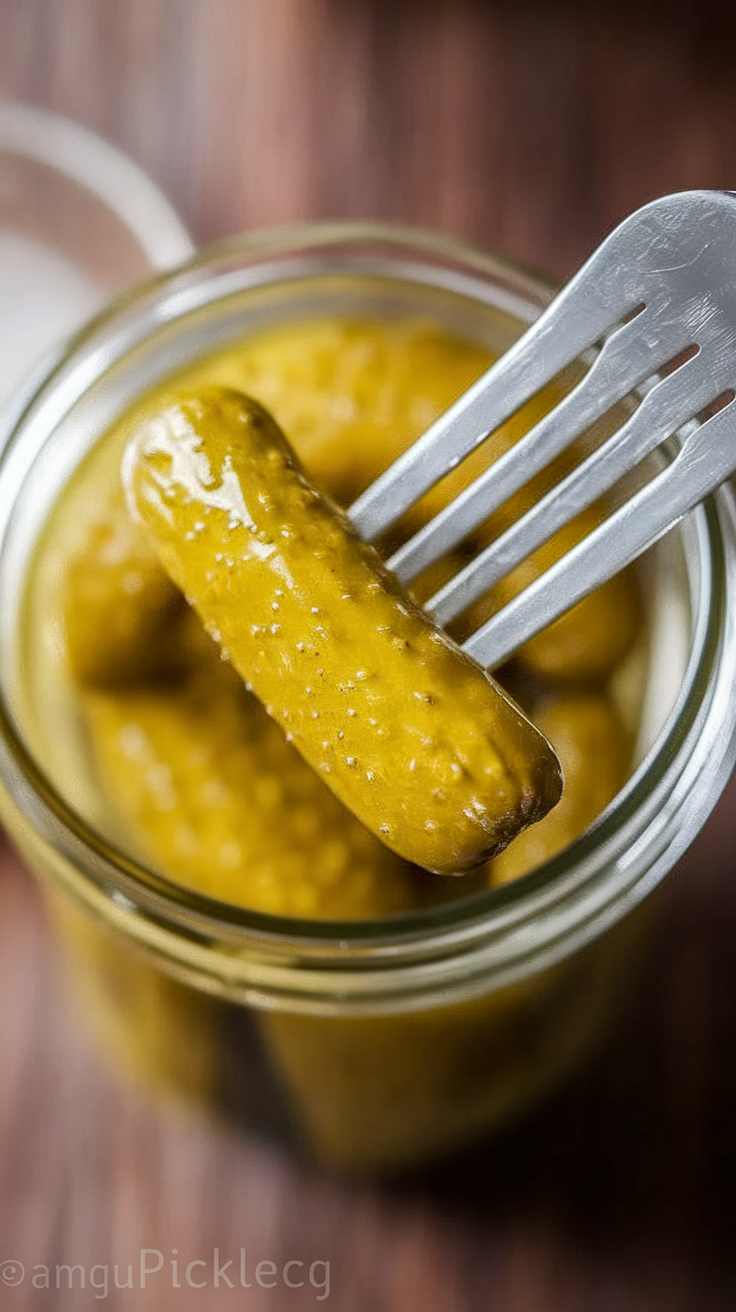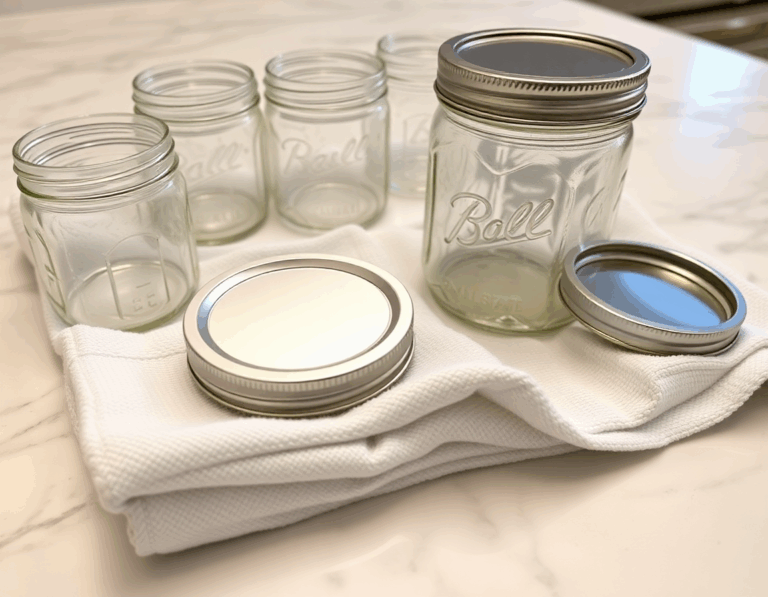There’s something oddly satisfying—almost magical, really—about the crunch of a perfectly pickled cucumber. I remember my grandmother’s kitchen, filled with the sharp, tangy aroma of dill and garlic, as she prepared jars upon jars of these zesty delights. Whether you’re a canning aficionado or a curious newbie, this easy recipe will have you savoring that nostalgic crunch in no time.
Cookbook Inspiration
A comprehensive cookbook could provide additional techniques and flavor variations for making and preserving homemade dill pickles.
Steps
- Prepare the Mason Jars: Begin by cleaning the glass mason jars and lids using soap and water. Then, dip them in boiling water to ensure complete sanitation. Carefully set them aside on clean towels to dry after removal from the water.
- Prepare the Cucumbers: Wash and rinse the cucumbers thoroughly. Trim off the ends to remove the enzyme that causes softening, helping to keep your pickles crisp. If the cucumbers are large, cut them to fit snugly into the jars.
- Prepare for Pickling: In each jar, add 1 teaspoon of dill seeds, ½ teaspoon of mustard seeds, 1 clove of garlic, and 4 whole peppercorns. Pack the prepared cucumbers tightly into the jars, ensuring they are evenly distributed.
- Make the Pickle Brine: In a medium pot, combine 2 cups of water, 1 ½ cups of white vinegar, 2 tablespoons of pickling salt, and 1 tablespoon of sugar. Heat the mixture over medium-high heat until it boils and the sugar and salt dissolve. Pour the hot brine into the jars, leaving ½ inch of space at the top, and then place the lids on, tightening by hand but not excessively.
- Water Bath Canning: Fill a large stock pot with water and bring it to a rolling boil, with a rack placed at the bottom. Submerge the jars in the boiling water for 10 minutes, allowing bubbles to escape. Carefully remove the jars and let them cool on a rack. Wait for 12 to 24 hours before testing the seal by pressing the lid; if it is sealed, the pickles are shelf-stable for up to a year. If not sealed, refrigerate and use within 7 days.
Ingredients
- 3 lbs. pickling cucumbers
- 4 tsp dill seeds
- 2 tsp mustard seeds
- 4 cloves garlic
- 16 whole black peppercorns
- 2 cups water
- 1 ½ cups white vinegar
- 2 tbsp pickling salt
- 1 tbsp sugar
Nutritional Values
Calories: 356 kcal | Carbohydrates: 52g | Protein: 12g | Fat: 4g | Saturated Fat: 4g | Sodium: 14016mg | Potassium: 2076mg | Fiber: 12g | Sugar: 32g | Vitamin A: 996 IU | Vitamin C: 48mg | Calcium: 408mg | Iron: 4mg
FAQ
- What type of dill should I use for homemade pickles?
- There are several forms of dill to choose from, such as fresh dill weed, dried dill weed, dill seeds, and dill heads. Fresh dill heads are often used in canning recipes, but if you don’t have access to fresh dill, using dried dill seeds is a convenient option that provides a bright, aromatic flavor.
- How long do homemade pickles last?
- Once the pickles have been processed, they should sit for 24 hours to ensure the seal is complete. If properly sealed, unopened jars can be stored in the pantry for up to one year. Once opened, keep the pickles in the refrigerator.
- Can I customize the flavor of my dill pickles?
- Absolutely! You can experiment by swapping dill seeds with dill heads or using pickling spice instead of mustard seeds and peppercorns. However, avoid using fresh or dried dill weed, as they are not suitable for this recipe.
- Is it possible to make pickle spears or chips with this recipe?
- Yes! You can slice your cucumbers into spears or chips as desired. The brine recipe provided is enough for four pint-sized jars or two quart-sized jars, ideal for larger cucumbers. Feel free to double the recipe if needed.
- What is the water bath canning method and why is it used?
- The water bath method is a straightforward canning technique that involves boiling jars in water to create a seal, preserving the contents for longer storage. It’s an effective way to ensure your pickles remain safe for up to a year in your pantry.
Tips
- Sanitizing Jars: Before starting, ensure your jars and lids are thoroughly sanitized by dipping them in boiling water. This step is crucial to prevent any harmful bacteria from contaminating your pickles.
- Trimming Cucumbers: Always trim off the flowering end of the cucumbers before pickling. This helps maintain their crunch by removing an enzyme that can soften them over time.
- Brine Preparation: When making the brine, ensure the sugar and salt are fully dissolved by bringing the mixture to a boil. Pour the hot brine into the jars, leaving about 1/2 inch of space from the rim, and don’t overtighten the lids.
- Water Bath Canning: Use a large pot with enough water to submerge the jars completely during the water bath process. A rolling boil should be maintained for about 10 minutes to ensure proper sealing, which is indicated by the release of bubbles and the eventual popping sound of the lids sealing.
Equipment
- Clean glass mason jars with lids
- Large stock pot with a rack for the bottom
- Canning jar lifter tongs
- Funnel for adding brine

I’m Heather, the founder of Hearty Home Bites, a place where I share my love for delicious, approachable recipes and the joy of gathering around the table. What started as a personal project quickly grew into a trusted resource for home cooks everywhere.


